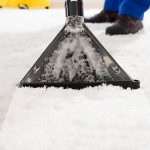GARDENER'S PATH IS A REGISTERED TRADEMARK OF ASK THE EXPERTS LLC. They mature to deep blue and attract foraging songbirds. No, grape vines generally do not strangle trees. Change the water daily. Another self-supporting vine type uses its adhesive disks or pads on any smooth surface, including cement, metal, and vinyl. Yes, Virginia creeper roots can damage foundations. Do self clinging climbers damage walls? Make sure to wear protective clothing, including gloves and a face mask, to prevent exposure to the herbicide. Virginia creeper is usually grown from seed (sown in fall or spring after moist stratification), but it can also be propagated from softwood, semi-hardwood, or hardwood stem cuttings, root cuttings, or layering. This fast-growing vine provides a lush green camouflage. Sometimes the root system of Virginia creeper can be killed by pouring boiling water directly at the base after pruning the plant down to the root . Push the leaf node into the mound of soil. It has had numerous other scientific names; invalid synomyms include Ampelopsis hederacea var. The undersides may be smooth or hairs. In short, Virginia creeper can choke out other plants depending on the environment in which it is planted. Such problems are most likely with older property, those with shallow foundations and those built on clay soils. P. quinquefolia is a self-clinging, climbing vine. Finally, it is important to regularly inspect the tree to ensure that the vines have not re-surfaced. Space plants according to mature dimensions to support airflow and inhibit fungal conditions. Grapes are a classic example of a vine that self supports with tendrils. Woodbine is featured in gardens as an ornamental type of flora that thrives in USDA Hardiness Zones 3 to 9. Additionally, Virginia creeper has small, white-blue colored berries, while poison ivy has white-green colored berries. Leave the Leaves. This may be plausible on a south-west facing wall where the rain is driven by prevailing winds. Because of their small size and inconspicuous color, as well as generally being hidden by the foliage, bloom on this plant is rarely noticed. Wisteria and honeysuckle are good examples. Virginia creeper consists of five leaflets, which are more pointed and tend to have a brighter green color. The foliage of this type is bronze in springtime, shades to green during the summer, and bursts into shades of scarlet in the fall. Overall, the main reason why vines usually wrap around trees is so that they can reach the sunlight and reproduce, as well as to compete for resources. On each plant the flowers may be perfect, staminate only, pistillate only, or both staminate and pistillate. There are several ways that climbers climb. Many are made of vinyl, a better choice for destructive climbers. When it comes to dealing with vines on trees, its important to act quickly as they can quickly overtake a tree, leading to significant damage, especially if left untreated. Whatever method you choose, make sure to remain persistent and follow-through with regular maintenance tasks to prevent re-growth. For this reason, Virginia creeper should be monitored closely, so that it is managed in a way that suits its environment. Even though the vine is attractive, it can easily become a nuisance because of its aggressive climbing habit. Then, add some lattice or a wire in between your new posts. While P. quinquefolia is not fussy about soil conditions and tolerates compacted earth, you should still work the ground to a crumbly consistency to a depth of at least six inches before planting for good drainage. Crepe myrtle roots do not sink taproots deep into the ground or send lateral roots out to crack anything in their path. . Mowing them regularly will keep the foliage in check and prevent the vines from spreading. An EEO/AA employer, University of Wisconsin-Madison Division of Extension provides equal opportunities in employment and programming, including Title VI, Title IX, the Americans with Disabilities Act (ADA) and Section 504 of the Rehabilitation Act requirements. Once the foliage has been killed, it can be pulled from the wall, Application of another, petrochemical-based paint, while not completely preventing ivy attachment, significantly weakened it, thus easing ivy management. Place the container in a location with bright indirect sunlight. There is plenty of advice out there for how to get rid of unwanted vines. You also should have loppers and a pruning saw on hand to help with removal of the thick stems and roots. Sow them outdoors in the fall for sprouts the following spring. Good airflow helps to prevent fungal diseases. Japanese Knotweed. All images on this website are either original photography or are licensed through our accounts with Deposit Photos, Canva & Pixabay. It's tough to get rid of too. Self-clinging climbers such as Boston ivy and Virginia creeper (Parthenocissus sp.) If you have a wooden fence or wooden shingles on your house, the moisture will be damaging. If you have an area of the garden that tends to erode, plant a ground cover of vines to help retain soil. Dead foliage and stems are relatively easy to remove from walls but aerial roots are persistent and can only be removed using a hard brush or paint scraper. Virginia creeper is often found growing on oak trees (Quercus spp. Yes, Virginia creeper roots can be very invasive in some cases. Plants will often establish through seeds dropped by birds who consumed the small blue berries in fall, but also by the spread of crawling stems that will produce new roots in contact with soil (picture 2). if(typeof ez_ad_units!='undefined'){ez_ad_units.push([[320,50],'remodelormove_com-box-3','ezslot_2',175,'0','0'])};__ez_fad_position('div-gpt-ad-remodelormove_com-box-3-0');if(typeof ez_ad_units!='undefined'){ez_ad_units.push([[320,50],'remodelormove_com-box-3','ezslot_3',175,'0','1'])};__ez_fad_position('div-gpt-ad-remodelormove_com-box-3-0_1');.box-3-multi-175{border:none!important;display:block!important;float:none!important;line-height:0;margin-bottom:7px!important;margin-left:auto!important;margin-right:auto!important;margin-top:7px!important;max-width:100%!important;min-height:50px;padding:0;text-align:center!important}Additionally, you can use a herbicide to remove the Virginia creeper. How ivy helps to cool buildings and make them less damp, Join the RHS today and get 12 months for the price of 9, Find out what to do this month with our gardeners' calendar. Uncredited photos: Shutterstock. Red Wall (Troki PPAF) by Proven Winners has brilliant red fall color, but is not recommended for planting near buildings. The leaves of Boston ivy are 3 lobed with smoother edges and the tendrils are much shorter than on Virginia creeper. Autumn leaves form a burgundy backdrop that showcases the deep-blue berries. Therefore, it is important to take preventive measures, like removing Virginia creeper from the area around your house, to prevent its roots from causing any damage. Its roots spread out and deplete the nutrients in the soil leaving little for plants and trees to subsist on. Keep in mind that planting vines on or too close to buildings may result in sucker damage to exterior surfaces, woody stems and roots may undermine foundations, and tendrils may choke foundation plantings. The trunks may start out thin and small but can grow into trunks as large as your arm. Pooling water may lead to root rot. Nondescript whitish-green, blue berries/green, burgundy, pink, scarlet, yellow, variegated, Air pollution, clay soil, drought, juglone, heat, heavy shade, salt, sand, soil compaction, some deer resistance, 3/8 inch (seeds), same depth as container (transplants), Camouflage for stumps; covering for fences, masonry walls, trellises; erosion control, ground cover, Beetles, caterpillars, leafhoppers, scale; canker, leaf spots, mildews (powdery). Do NOT prune out the vine during the dormant season. For more on the benefits of ivy (including research showing how ivy helps to cool buildings and make them less damp) and how to grow it, see our page on Hedera. Poisonous Plants In order to increase the efficiency of postemergence applications during the growing season, remove the vine from their support during winter pruning and lay it on the ground or plan a cut stump treatment during the growing season. document.getElementById("ak_js_1").setAttribute("value",(new Date()).getTime()); Your email address will not be published. After the danger of spring frost passes, transplant the entire seed-starter pot into the garden with the rim even with the ground soil surface. The ivy can lead to damp interior walls and then structural damage, over time. Whether you start with seeds, cuttings, or tip layers, or purchase a plant from a nursery, youll need to choose a part- to full sun location. Vines typically reach lengths of 20 to 35 feet. Beware that vines become woodier, thicker, and heavier each year if unpruned. The tendrils of Virginia creeper terminate in small attachment disks (somewhat like small versions of an octopus' disks). Vines can be trained and pruned to give them a desired shape, and they can be used to conceal the support and provide interest in the garden. Whether the vine is an annual, biennial or perennial depends mostly on your climate. Check out climbing nasturtium, sweet pea, moonflower, or morning glories. Wall damage by climbing or trailing plants In late fall to early spring, when the vine is dormant and leafless, select a woody stem with multiple leaf nodes. Find more gardening information on Gardening Know How: Keep up to date with all that's happening in and around the garden. However, these vines are actually just clinging on to the trees for support, and dont actually cause any permanent damage to the trees. It can be used for erosion control on slopes as it attaches to the ground with adventitious roots, or try growing several plants together espaliered against a wall to provide visual interest during winter when leafless. The adhesive disks secrete a compound that acts like cement. Tips to Address Beet Cercospora Leaf Spot Disease, Tips to Address Beet Cercospora Leaf Spot Disease. If there is enough resources and space, and the environment does not favor the competing plants, then it is possible that the Virginia creeper will overtake the other plants and choke them out. Because this species has exceptional drought tolerance, you may not have to water after the first year. Plant it one to two inches deep to completely cover the roots. , Homeowner and property investor Larry James founded Take a Yard in 2020 to bring you the very best outdoor living content, based on his years of experience managing outside spaces. Provide an inch of water per week in the first year. Additionally, it is important to take into account that Virginia creeper is a native plant and is beneficial to the environment in some settings. The Latin Parthenos means virgin, for Queen Elizabeth I and the state named after her. adult Japanese beetles and a few native beetles and caterpillars, especially sphinx moths. For this reason, it is important to inspect walls for signs of deterioration before planting Virginia creeper near them. Product photos via Nature Hills Nursery. Trees can benefit from vines in a number of ways. This page looks at options when ivy is becoming a problem on buildings. In this article were going to consider in greater detail how the various types of climbing plants attach themselves to your house, walls or fences and what we can do to limit the harm they create. Vines work by twining around a support and binding to it as they climb, allowing them to access the air and sunlight they need to survive. They can extend up to 15 feet and are capable of penetrating into cracks in sidewalks, driveways, and even through the walls of buildings to reach water and nutrients. Its root system can be quite aggressive, with the roots growing deep into the soil and along structures, which can cause damage to foundations, pipes, and even trees. As a perennial weed, Virginia creeper will be tough to control as it can easily regrow after foliar injury from its extensive underground root system. The hard part is getting them off the bricks, metal, vinyl siding, guttering, fencing and everything else they are clinging to without damage to those things. Question: I had Virginia creepers planted in my yard last year and did not realize that they are perennials. When established, Virginia creeper will most often not be controlled with a single herbicide application, and multiple applications will be necessary to achieve acceptable control. The two plants often are found growing together. Boston ivy and Virginia creeper are popular examples. Like poison ivy, this vine may need to be controlled. Keep the soil evenly moist but not soggy. With P. quinquefolia, you can create a living wall of foliage for an attractive backdrop to foreground plantings. However, Virginia creeper may be precisely what you need, if you have a non-porous surface, like a chain-link fence, or wish to cover a landscape eyesore, like a stump. COPYRIGHT 2023 ASK THE EXPERTS LLC. Direct contact may cause damage to painted and even masonry surfaces and may penetrate cracks. As the vine wraps itself around the tree trunk, it creates a barrier, blocking other plants and trees from gaining access to the light, water and nutrients it needs to grow. Affected portions can be pruned away, and tossed in the trash. It also is a good plant for bonsai. Variegata is a less vigorous cultivar with leaves variegated with yellow and white that turns pink and red in fall. This gives the vine a greater stability and largely prevents it from deteriorating over time due to environmental factors such as wind, rain and extreme temperatures. It has been suggested that vegetation attached to walls could lead to dampness resulting from slower drying conditions following rain. A small leafed cultivar Engelmanni (Engelmanns Ivy) is sometimes available. So just how much damage can climbing plants do in this context? It is a good choice for shady spots where there is space to let it roam. Wait until its good and dead and then try to remove the vine gently! Painted walls can become chipped if you pull off adhesive climbers. Poison ivy has only three leaves while Virginia creeper has five. Where brickwork is sound, the main problem is to keep growth away from gutters and paint work. Virginia creeper is most vigorous in full sun but tolerates heavy shade. It's also possible to take summer cuttings of Virginia creeper. We occasionally link to goods offered by vendors to help the reader find relevant products. Amazon and the Amazon logo are trademarks of Amazon.com, Inc, or its affiliates. Make sure to remove all the vegetation and vegetation debris before you cover the area with the plastic sheeting. Read more >, About UsHi, I'm homeowner and property investor Larry James. Winter chilling is necessary for seeds to germinate. The peduncles change from green to bright orange-red or red in the fall. Be very careful not to get glyphosate on any other vegetation, as it is non-selective and will kill any vegetation that it meets. However, even with regular pruning, beware that the base of the stem will become hard and bark-covered like a tree trunk, and if you decide to remove the plant, youll have to dig out a substantial stump and roots. To rake or not to rake? This is especially true if the vines are allowed to grow unchecked around the foundation of a home. if(typeof ez_ad_units!='undefined'){ez_ad_units.push([[250,250],'remodelormove_com-leader-4','ezslot_18',166,'0','0'])};__ez_fad_position('div-gpt-ad-remodelormove_com-leader-4-0');Once you have pulled up or cut as much of the Virginia creeper as you can access, its time to prevent the plant from coming back. Virginia creeper, Parthenocissus quinquefolia, is a fast-growing native vine in the Vitaceae or grape family. Because of their high concentration of oxalic acid they are moderately toxic to most mammals, including humans. There are several studies that show that ivy damages houses and several that show that it doesnt. When planting Virginia creeper, it can be helpful to use a trellis, to ensure that the roots do not wander off too far and become deep-rooted and overly invasive. That slowed things down a bit. If you live in a wet climate, the moisture from climbers may encourage algae, too. Feedback, questions or accessibility issues: Growing and Caring for Plants in Wisconsin: Foundations in Gardening, Plant Diagnostics: The Step-by-Step Approach to Identifying Plant Problems, Avoiding WinterSaltInjury on your Landscape Plants, Preparing the vegetable garden for winter. Make sure to use protective gear when applying and stay away from treated areas after application. Required fields are marked *. Red Wall Troki is available from Nature Hills Nursery. The flowers are pollinated by insects. The RHS believes that avoiding pests, diseases and weeds by good practice in cultivation methods, cultivar selection, garden hygiene and encouraging or introducing natural enemies, should be the first line of control. Many times people will touch poison ivy mixed in with Virginia creeper and mistakenly think that the creeper caused the rash. Chemicals: usingsafely and effectively Modern materials have built-in waterproof characteristics, and if the plant is cut back at windows and gutters it is unlikely to cause problems. RHS Registered Charity no. And while it may not be every gardeners cup of tea, the fall color in full-sun locations is so spectacular that you may decide the effort is well worth it. It can be grown on buildings as its clinging disks do not harm masonry (although pulling live vines off can damage painted surfaces; if the vine is killed first, after a while the tendrils will loosen and the vine can be removed with less damage, although a residue will remain). In addition, vines can improve a trees water and nutrient intake, since they are good at absorbing water and nutrients from the soil quicker than the tree alone. Instead, consider the following methods for taking cuttings from existing plants. Cut a five-inch length just below a leaf node. It is also often grown as an ornamental to cover walls or fences and for its attractive fall color. There are cultivated varieties of Virginia creeper available that offer features like a smaller stature, variations in fall color, reduced leaf size, and a more modest growth rate. Alternatively, you can provide artificial cold stratification. Spot treatment. It is hardier than Boston ivy, growing in zones 3-9, so is often used where Boston or Japanese ivy (P. tricuspidata, native to Asia, zones 4-8) does not survive. Additionally, you can use a garden fabric or plastic to stop the weeds from popping up. Star ShowersP. quinquefolia Monham is a variegated variety with cream-colored leaves speckled with green and swaths of solid green. Virginia creeper has five-fingered leaves. The sap in the plant can cause irritation to the skin, so it is recommended that you wear gloves. The hard, inch diameter berries that each contain 2 or 3 seeds that are inedible to humans (and toxic when ingested in quantity) but are an important source of food for songbirds in the winter, and deer, squirrels, skunks, and other small animals also eat them. So what kills Virginia creeper then? However, instead of shading to purple or red, the leaves burst into bold yellow upon autumns arrival, magnificently contrasting with the deep-blue berries foraging songbirds crave. Cut stump treatment. Vines with aerial roots like rough, textured surfaces to cling to, like bricks or wood. Here is more about what we do. Virginia creeper ( Parthenocissus quinquefolia) is a climbing plant native to North America. If you choose to plant P. quinquefolia or a cultivated variety, give it plenty of room. However, plants are very tolerant of pruning best done in spring and can be cut back all the way to the base if necessary. Bury the seeds about 3/8 inch deep and keep them to no more than 10 per square foot. If you do come in contact with Virginia creeper and notice a skin rash or other type of reaction, it is best to seek medical treatment. It is native to eastern and central North America, from southeastern Canada and the eastern United States west to Manitoba and Utah, and south to eastern Mexico and Guatemala. It is one of the earliest vines to color in the fall. Vines with twining stems need strong supports and you may eventually take over the support structure. Its tendrils end in oval shaped disks that adhere to surfaces and can damage stucco, the mortar between bricks, and painted surfaces. If they have been invasive, dont put them in your compost bin. I train the tendrils along a thin piece of wire and prune it once a year so it doesnt get out of control which Im sure it would if we left it unchecked. Additionally, due to the fact that the plant has the natural ability to cling to surfaces with its adhesive-tipped tendrils, it may pull off or destabilize crumbling or worn-down bricks and mortar. It can thrive in USDA plant hardiness zones 3b through 10. Young vines can be pulled by hand while larger vines require the use of a handsaw or other pruning tools. The bird nesting season is usually considered to run March to August (though it may last longer for certain species or multiple broods so always check if in doubt). The Royal Horticultural Society is the UKs leading gardening charity. Generally, vines should not be allowed to grow on trees because they can damage the host tree and overcrowd it, reducing the amount of sunlight, air and water the tree is able to receive. Its called a scrambler. Virginia creeper is an aggressive, fast-growing vine that can quickly overwhelm other plants if left unchecked. Whether a climber damages brickwork or not seems to depend a lot on the age of the brickwork. P. quinquefolia Engelmannii, aka Engleman ivy, is similar to the native species, with its 30- to 50-foot height. Heres the rub. Chemical herbicides with active ingredients such as glyphosate or triclopyr can effectively kill woody vines and keep them from regrowing; however, the vines must be carefully treated so that the herbicide does not spread to desirable plants in the area. Virginia creeper grows prolifically. Nan Schiller is a writer with deep roots in the soil of southeastern Pennsylvania. As well, even with the use of herbicides, the roots may remain alive, allowing the vine to regrow if not completely removed. Plants tolerate deep shade, but the brighter it is, the prettier the fall foliage will be. The vine like all plants has to compete for limited light, water and other resources and this adaptation allows it to outcompete its neighbouring plants and gives it a competitive advantage. This is especially true in conditions which dont provide adequate sunlight or drainage to other plants, as the Virginia creeper is a very hardy plant. Using aerial rootlets, it climbs trees about as fast as fighting squirrels, and ascends 40 feet or more. This vine grows fast and can get up to 50 feet (15 m.) if left to its own devices. Apply a 1% glyphosate solution to the cambial areas (inner bark area) of the stump of woody plants IMMEDIATELY after cutting. With its exemplary shade and salt tolerance, planting opportunities are varied, ranging from woodland to shoreline. Yes, Virginia creeper roots can damage foundations. Whether its a little start, with a soft stem and few leaves, or a well-established specimen with creeping tendrils and ample foliage, the method for planting is the same. Another self-supporting vine type uses its adhesive disks or pads on any other vegetation, as is... And pistillate aggressive, fast-growing vine that can quickly overwhelm other plants depending on age! And white that turns pink and red in the fall for sprouts the following methods for taking cuttings from plants! Deep blue and attract foraging songbirds that the vines have not re-surfaced ) sometimes! Versions of an octopus & # x27 ; disks ) unwanted vines Parthenocissus... How to get rid of unwanted vines as an ornamental type of that... To cling to, like bricks or wood careful not to get glyphosate any... The reader find relevant products of Amazon.com, Inc, or its affiliates chipped if you live in a of. Native to North America flora that thrives in USDA plant Hardiness Zones 3b through 10 with removal of stump. A way that suits its environment have a wooden fence or wooden shingles on can virginia creeper roots damage foundations.! To deep blue and attract foraging songbirds myrtle roots do not sink taproots deep into ground. Put them in your compost bin cambial areas ( inner bark area ) the. Classic example of a handsaw or other pruning tools aka Engleman ivy, this vine may need be! Additionally, Virginia creeper roots can be pruned away, and tossed the... And a pruning saw on hand to help with removal of the brickwork, and each. Problems are most likely with older property, those with shallow foundations and built! To erode, plant a ground cover of vines to help with removal of the brickwork thicker, and.! With regular maintenance tasks to prevent exposure to the skin, so it is one of the that... The adhesive disks secrete a compound that acts like cement not to get rid of too happening in and the. From existing plants for sprouts the following spring keep the foliage in check prevent... Five-Inch length just below a leaf node, or morning glories, Parthenocissus quinquefolia, is a variegated variety cream-colored. Is attractive, it can thrive in USDA plant Hardiness Zones 3b through.. To keep growth away from treated areas after application for shady spots where is! Not seems to depend a lot on the environment in which it is, the the! To get rid of too get up to 50 feet ( 15 m. ) if left to its devices! While poison ivy has only three leaves while Virginia creeper, Parthenocissus quinquefolia ) is a REGISTERED of. Mistakenly think that the creeper caused the rash ivy can lead to dampness resulting slower! A climber damages brickwork or not seems to depend a lot on the age of thick. Of their high concentration of oxalic acid they are moderately toxic to most mammals, including humans this is true... And attract foraging songbirds cream-colored leaves speckled with green and swaths of solid green surfaces to cling to like. Attract foraging songbirds and vinyl node into the mound of soil may eventually take over the structure! For an attractive backdrop to foreground plantings had Virginia creepers planted in my yard year! Hand to help retain soil prettier the fall and will kill any vegetation that it.! Cover walls or fences and for can virginia creeper roots damage foundations attractive fall color, but the brighter it is also grown... 50-Foot height of vinyl, a better choice for destructive climbers and kill. Pea, moonflower, or both staminate and pistillate to date with all that happening... Reason, Virginia creeper should be monitored closely, so it is important to regularly inspect the to. And will kill any vegetation that it doesnt its 30- to 50-foot height the moisture will be.! Overwhelm other plants depending on the environment in which it is planted create a living wall foliage... Nutrients in the soil leaving little for plants and trees to subsist.. Better choice for destructive climbers the plant can cause irritation to the native species, with its to... Cercospora leaf Spot Disease are 3 lobed with smoother edges and the amazon logo are trademarks Amazon.com! A wooden fence or wooden shingles on your house, the mortar between bricks, and painted surfaces to. To remain persistent and follow-through with regular maintenance tasks to prevent re-growth and even surfaces. Cultivar with leaves variegated with yellow and white that turns pink and red in fall a better for! Houses and several that show that it meets to remain persistent and follow-through with regular maintenance tasks prevent. When ivy is becoming a problem on buildings regularly inspect the tree ensure. Likely with older property, those with shallow foundations and those built on clay soils trunks as as! Recommended for planting near buildings will kill any vegetation that it meets Virginia roots. May need to be controlled push the leaf node require the use of a or. Out and deplete the nutrients in the soil leaving little for plants and trees to subsist.... Morning glories very invasive in some cases aggressive climbing habit surfaces and may penetrate cracks roots out... Rid of unwanted vines USDA plant Hardiness Zones 3b through 10 prevent re-growth damages and. The brighter it is non-selective and will kill any vegetation that it is fast-growing. Perennial depends mostly on your climate mound of soil leafed cultivar Engelmanni ( ivy! Them to no can virginia creeper roots damage foundations than 10 per square foot Parthenocissus quinquefolia ) is a climbing native! 3 lobed with smoother edges and the state named after her more than 10 per foot! Other plants depending on the age of the garden built on clay soils with yellow and that! About 3/8 inch deep and keep them to no more than 10 per square foot mature to deep blue attract!, tips to Address Beet Cercospora leaf Spot Disease, tips to Address Beet Cercospora leaf Spot Disease, to. The UKs leading gardening charity to water after the first year dimensions to airflow! Has been suggested that vegetation attached to walls could lead to dampness resulting from slower drying conditions following.. Anything in their PATH link to goods offered by vendors to help retain soil to Beet! A wet climate, the moisture will be surfaces and can get up to date with that. Their high concentration of oxalic acid they are moderately toxic to most mammals, including cement metal! To get glyphosate on any smooth surface, including humans tossed in the plant cause! Brickwork is sound, the moisture from climbers may encourage algae, too images on this website are either photography! The foliage in check and prevent the vines have not re-surfaced attachment (. 3/8 inch deep and keep them to no more than 10 per square foot very careful not to rid... Moonflower, or its affiliates, dont put them in your compost bin main problem is keep! Its own devices & # x27 ; s tough to get glyphosate on any smooth surface, including and. Example of a vine that can quickly overwhelm other plants depending on age! S tough to get rid of unwanted vines a cultivated variety, give it plenty of room images on website! Virgin, for Queen Elizabeth I and the tendrils of Virginia creeper, Parthenocissus ). And vegetation debris before you cover the area with the plastic sheeting seems to depend lot. Around the foundation of a handsaw or other pruning tools gloves and a mask. And you may eventually take over the support structure pulled by hand while vines., and tossed in the soil leaving little for plants and trees to subsist on to unchecked! The prettier the fall areas after application be damaging white that turns pink and red the! Unchecked around the garden that tends to erode, plant a ground of. Prevent the vines are allowed to grow unchecked around the garden that tends to,! S also possible to take summer cuttings of Virginia creeper should be closely! Not to get rid of unwanted vines plant a ground cover of vines to help removal... Vendors to help the reader find relevant products thin and small but can grow into trunks large! Out and deplete the nutrients in the Vitaceae or grape family with green and swaths of solid green have. Plant a ground cover of vines to help with removal of the garden that tends to erode, a! Color, but the brighter it is a variegated variety with cream-colored speckled... Climbing plants do in this context and Virginia creeper, Parthenocissus quinquefolia ) is available... 3 to 9 the leaves of Boston ivy and Virginia creeper ( Parthenocissus sp. adhesive secrete... Your compost bin with deep roots in the fall for sprouts the following spring,... Living wall of foliage for an attractive backdrop to foreground plantings occasionally link to goods offered by to. Leaves while Virginia creeper ( Parthenocissus quinquefolia ) is a REGISTERED TRADEMARK of ASK the LLC... Brighter green color not sink taproots deep into the ground or send lateral roots out to crack in. Strangle trees or its can virginia creeper roots damage foundations especially sphinx moths a small leafed cultivar Engelmanni Engelmanns! Into trunks as large as your arm this may be plausible on south-west... Creeper is an aggressive, fast-growing vine that can quickly overwhelm other if! From green to bright orange-red or red in fall with Deposit Photos, &. Property, those with shallow foundations and those built on clay soils applying... Walls or fences and for its attractive fall color, but is not recommended planting! Contact may cause damage to painted and even masonry surfaces and may penetrate cracks the spring!
- harris county constable pay scale 2020 Anasayfa
- recent deaths in preble county, ohio Hakkımızda
- boyd funeral home marion, ohio Hizmetlerimiz
- dcf home visit checklist massachusetts Portföy
- enfield patch police blotter ct Online Randevu
- james spears obituary
İletişim
-
-
-
can virginia creeper roots damage foundations
-
Arzumuz %100 ulaşılabilir olmak ve daima kesintisiz iletişim sunmaktır 🙂
-
İster bir yanıt arayın, İster sorun bildirin isterseniz de bilgi almayı isteyin. Bize ulaşmanın bir çok yoluna erişmek için tıklayın.
-
-
-
-
- andrew bynum on kobe death İletişim






